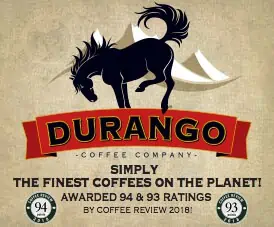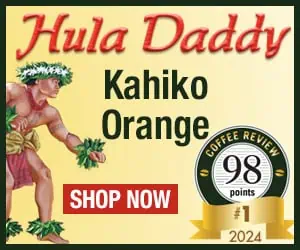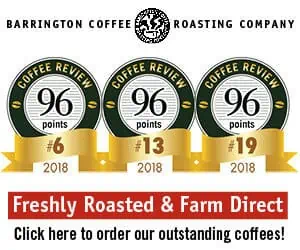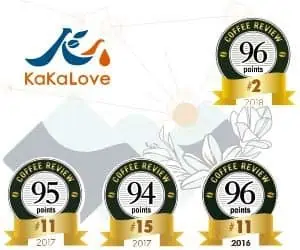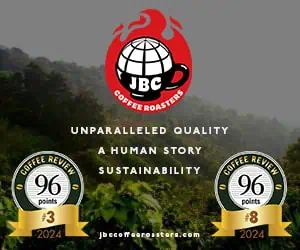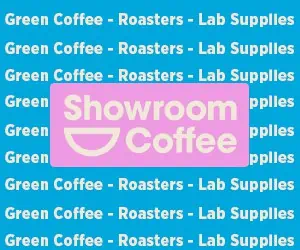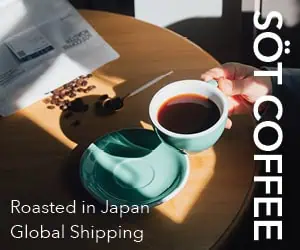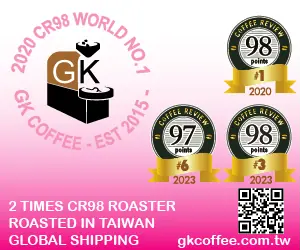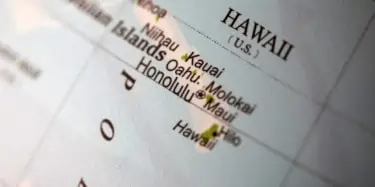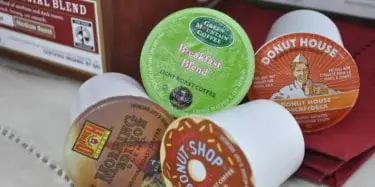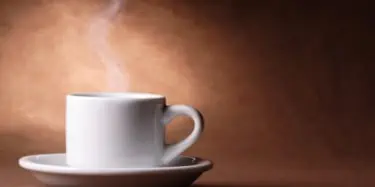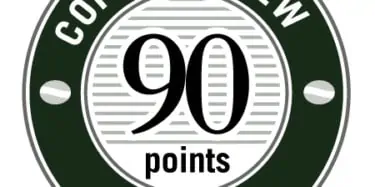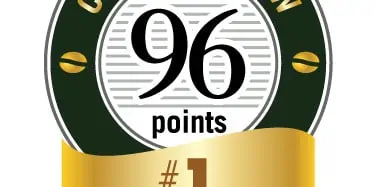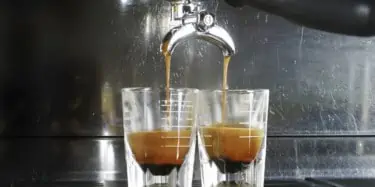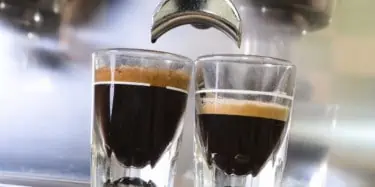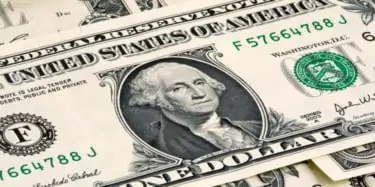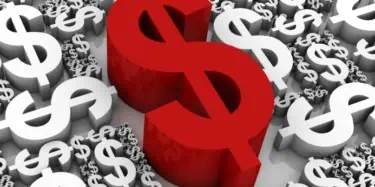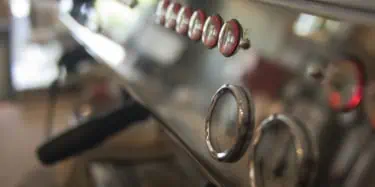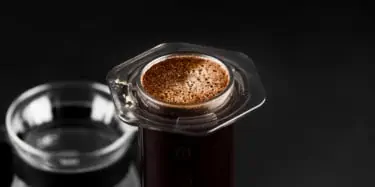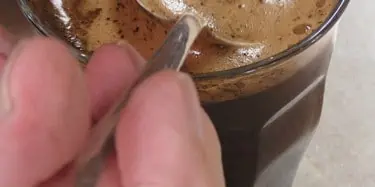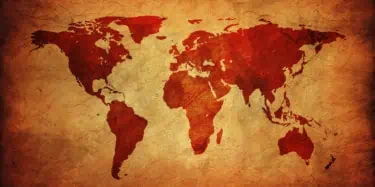Perhaps as we approach the All-American holiday of Independence Day, it's appropriate to consider what the "best" American coffee is. And, given that Hawaii is the only U.S. state that grows commercial quantities of coffee, it might naturally lead to the question "What's the best Hawaiian coffee?" That is a question raised in a recent reader search on CoffeeReview.com. First of all, as
Journal
Coffee Review publishes regularly scheduled monthly coffee tasting reports according to our editorial calendar as well 100-point wine-style coffee reviews throughout the month. Our Journal page is where we share news, updates, and general blog posts to keep readers and industry professionals up to date about Coffee Review and other topics of interest to coffee lovers.
Single-Serve Coffee and Espresso Reviews
Machines that utilize a pod, capsule, or K-Cup packed with ground coffee to brew a single serving of coffee (or espresso) are very popular. According to the latest data from the National Coffee Association, thirteen percent of the U.S. population drank coffee made in a single-cup brewer. We first evaluated coffees brewed on single-serve machines in our January 2004 article - At What Cost
Low Acid Coffees
We track the search terms that readers use to find CoffeeReview.com. Recently I noticed quite a few readers looking for information about low acid coffees. One reader was even trying to find out what acid was added to coffee. Well, to answer the question, acid is generally not ADDED to coffee. It occurs naturally and actually provides what Kenneth Davids calls a "sweetly tart spark" that
Hype Meets the Cup: St. Helena Sandy Bay Estate
Some interesting green coffees have come into the lab recently. These were green samples, but you can probably find roasters who offer them via an Internet search. Those who have some history probably are aware that St. Helena, a tiny island located in the middle of the South Atlantic roughly between Brazil and Africa, is famous as the final exile place of Napoleon I (and also, in travel
A Brief, Early History of 100-Point Coffee Reviews
I was curious who received the first 90-point coffee review, which lead me to re-read the first Coffee Review article from 1997. Wow! “I have been convinced that the time has come to start assigning numerical rankings to cuppings as my counterparts have been doing for some time with wines, beers and cigars. These rankings are expressed as a number from 0 to 100….” – Kenneth Davids, Coffee
What Does a 96-Point Coffee Taste Like?
What does a 96-point coffee taste like? Well, you can find out for yourself. Three coffees in 2013 have received ratings of 96 points... and at least two of them are still available from the roasters. Our blind assessments of these remarkable coffees appear below. La Esmeralda Mario Carnaval 2012 Panama by George Howell Coffee/Terroir Coffee "Delicate but lush; piercingly sweet. Honey,
Top-Rated Espressos from the First Half of 2013
As we approach the mid-way point of 2013, we decided to take a look back at the top espressos from the first half of the year. Six espressos earned 94 points, the highest score for an espresso so far in 2013. Three of these coffees are from U.S. roasters: Thirty-Thirty Coffee Co. by Momma Bear Espresso, $17.00/12 ounces. Tchembe Single Origin Espresso by Barrington Coffee Roasters,
Are Espressos A Bargain?
Coffee Review evaluates and rates coffees that are intended for both espresso and non-espresso brewing. We are agnostic on brewing method from the point of view of rating a coffee. So, it's reassuring to see that the average posted score for espressos (92.10) by American roasters in the first half of 2013 is nearly identical to that for non-espressos (92.14). However, the average price of
Some 2013 Best Value Coffees Still Available
Highly rated coffees that are also affordable sell quickly. We did a little checking around for you.... Some of this year's best value 90+ rated coffees are still available: Johnson Brothers - Ulos Batak Sumatra Peaberry - 95 points - $14.99/12 ounces - http://bit.ly/18D4gMC Lexington Coffee - Sumatra Mandheling Wahana - 94 points - $13.50/12 ounces - http://bit.ly/14ziJ8i Conscious
The High Price of Coffee in Taiwan
Yesterday, we noted that the average price of a 90+ point coffee from U.S. roasters in 2013 is $22.13 per pound. Count your blessings if you're a consumer in the United States. In 2013, we've reviewed 23 coffees rated 90+ from Taiwan. The average score was nearly identical to the U.S. average: 92.0 vs. 92.1 for the U.S. However, there was a dramatic price difference. The average price per
What You’ll Pay for a 90-Point Coffee
At Coffee Review, we cup coffees on a blind basis. To be completely objective, we hide the identity of the roasters and coffees until after scores are determined and tasting notes are completed. When we cup, we don't know the price of the coffee either. It's irrelevant from a cupping point of view. However, it's not irrelevant to consumers. In fact, for most people, the price of a coffee
Promising Sumatras
Due to Kenneth David's rugged travel schedule over the past several weeks, the June issue of Coffee Review, which features coffees from Sumatra, is behind schedule. We expect to post the article and reviews within the week. Sorry for the delay. Reports from the Coffee Review lab on the samples we've received are very positive. We've received some truly exceptional Sumatras. It wouldn't be
Lighter and Brighter: Single-Origin Espressos
Coffees from a single farm or cooperative roasted for espresso preparation – aka “single-origin” or simply “SO” espressos – are now a familiar presence on high-end coffee menus and counters in North America, and in many East Asian countries as well. But it was not so long ago that the argument ran that a single coffee from a single origin would always be too limited in its sensory properties to
Benchmarking the New Starbucks and Peet’s Medium Roasts
When Starbucks, bowing to changing tastes in coffee, debuted two “Blonde” medium-roasted blends a couple of weeks ago, reaction among the blogging and tweeting cadres of coffee observers was predictable. One of our readers wrote that she didn’t want to bias us before we tested the new Starbucks blends, but for her they tasted like “cardboard and water.” She added that she would prefer to remain
The Complexity of Coffee: Aroma Profiling Isn’t Just for Wine
Proper Aroma/Flavor profiling is all too often neglected in Coffee. Coffee Aromas/Flavors are essential to understanding and appreciating coffee. As in wine, coffee gets its aromas or flavors from the soil and the climatic environment in which the coffee plant grows. The coffee variety (genetic) and the method in which the green coffee was processed also contribute to the aromas/flavors. Like
Equipment Review: Aeropress Coffee Maker
About five years ago or so Alan Adler, the inventor of the Aerobie Flying Disk, created the Aeropress because he wanted a cup of coffee was full and rich, similar to the results from a French press but with cleaner, less acidy attributes. After some experiments and prototyping, Alder solicited feedback about his creation from well-known coffee professionals before releasing it to the market. The
Quality: Passion, Process or Both?
The challenge: The highest quality coffee is produced by large, technically sophisticated companies which do a much better job at delivering fresh, consistent, good-value coffees than do most of today’s smaller specialty roasting companies. I find I need to parse this lengthy and loaded sentence in order to comment on it. Quality in coffee is a multifaceted thing, in large measure because of
Regardless of Size, Only the Passionate Rule
The challenge: The highest quality coffee is produced by large, technically sophisticated companies which do a much better job at delivering fresh, consistent, good-value coffees than do most of today’s smaller specialty roasting companies. Neither size nor technical sophistication assures quality. Only the obsessive and unrelenting commitment of a company’s leadership assures a
Travel Less and Cup More
The Challenge: Coffee buyers for roasting companies should be doing much less travel and much more cupping, quality control and customer education. Kevin Knox writes: I’d put this another way. The most important tools for buying great coffee are a well-trained palate, a well-equipped cupping room, relationships with the best importers and - last not least - sufficient capital to
Making Coffee Travel Relevant
The Challenge: Coffee buyers for roasting companies should be doing much less travel and much more cupping, quality control and customer education. Kenneth Davids writes: I guess my reservation with the challenge statement is the repetition of the “much” word. If the thrust of the challenge statement is to argue that coffee buyers should focus first and foremost on the

